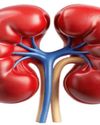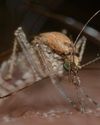A short commentary on Molecular diagnosis of COVID-19 using RT-PCR
Scientific India
|September - October 2020
In today's time, the coronavirus pandemic has caused havoc in the world. This is evidenced in the upsurge of research that is being conducted by both public and private sector laboratories. However, there is a lot of curiosity from the public and individuals are asking the question as to how COVID-19 is being investigated in the laboratories? Keeping this in mind, we have tried to provide information in this article about the detection of COVID-19, thus we hope this information will be helpful to understand the detection of the COVID-19 disease using polymerase chain reaction (PCR). Therefore, we will first know what are PCR and the variations thereof between PCR, RT-PCR, qPCR, and RTqPCR and how they work. We will further explain how coronavirus is detected through RT-PCR.

PCR is a laboratory (in-vitro) technique that is employed Pfor amplifying a targeted portion of DNA. This technique is a cell-free method utilized to synthesize several identical copies of a gene or DNA of interest. Thus, it is a very essential tool in a molecular biology laboratory synonymous to a photocopier as a basic requirement in an office. First, we will outline the requirements for a standard PCR reaction – the following will be needed: DNA polymerase enzyme, magnesium chloride (MgCl2), nucleotides, primers, nuclease free water, target DNA template to be amplified and a PCR machine. The PCR reaction mechanism is simple and starts with an initial Denaturation where the double-stranded DNA is heated to separate the strands (1st step) this allows for the primers to attach to the now single stranded DNA (2nd step). After the primers align to the DNA strand, the DNA polymerase enzyme extends the primers (3rd step) which results into two identical copies of the original DNA template. These three steps are repeated over a series of temperatures and times a single complete process of the three combined is known as an amplification cycle. It is important to optimize every step of the cycle to the DNA template and the set of primers being used. The cycles can be repeated as many times as needed, however, on average a standard PCR is run for around 30 to 40 times after which the amplified product is then analyzed. The polymerase chain reaction is used to amplify a targeted DNA of interest for downstream experimental purposes; and it has also found immense use in detection of pathogenic DNA as well as other applications in genetic testing. PCR is a very sensitive technique as tiny volumes of a single reaction are required, as such it is recommended that a master mix is prepared if there are many reactions.
このストーリーは、Scientific India の September - October 2020 版からのものです。
Magzter GOLD を購読すると、厳選された何千ものプレミアム記事や、10,000 以上の雑誌や新聞にアクセスできます。
すでに購読者ですか? サインイン
Scientific India からのその他のストーリー
Scientific India
Japanese physicists were the first to measure the most tolerant entanglement state, the W state
There are many unusual things that happen in the world of quantum physics.
3 mins
September - October 2025

Scientific India
The Fifth Force: Could It Unlock the Secret of Dark Matter?
What if the universe is powered by a force we've never seen before? For centuries, science has explained nature with four fundamental forces.
3 mins
September - October 2025

Scientific India
A flu test you can chew
As flu season nears in the northern hemisphere, scientists are exploring a surprising new way to detect infection: through taste.
1 mins
September - October 2025

Scientific India
Lab-Grown Kidney Brings Artificial Organ Dream Closer to Reality
In a major leap toward bioengineered organ replacement, scientists have successfully grown human kidney 'assembloids' in the laboratory that mimic key structural and functional features of natural kidneys.
1 min
September - October 2025

Scientific India
Your pumpkin might be hiding a toxic secret
Pumpkins, squash, zucchini, and other members of the gourd family have a surprising trait: they can take up pollutants from the soil and store them in their edible parts.
1 mins
September - October 2025

Scientific India
2025 Nobel Prize in Physics Reveals Quantum Secrets in Superconducting Circuits
The 2025 Nobel Prize in Physics has been awarded to John Clarke, Michel H. Devoret, and John M. Martinis for their pioneering experiments that brought quantum mechanics from the invisible atomic world to the macroscopic scale a system large enough to hold in your hand.
1 mins
September - October 2025

Scientific India
Genomic Evidence Redefines the Evolutionary Age of Mosquitoes
A new genetic analysis has shaken up what we thought we knew about one of humanity's most notorious pests the mosquito.
1 min
September - October 2025

Scientific India
Nobel Prize in Chemistry 2025: Building Molecular Architectures with Room to Breathe
In a scientific breakthrough that bridges molecular design with planetary-scale problems, the 2025 Nobel Prize in Chemistry has been awarded to Susumu Kitagawa, Richard Robson, and Omar Yaghi.
1 mins
September - October 2025

Scientific India
Guardians of Immunity: Nobel Prize 2025 Honors Discoveries that Keep the Immune System in Check
The 2025 Nobel Prize in Physiology or Medicine has been awarded to Mary E. Brunkow, Fred Ramsdell, and Shimon Sakaguchi for their groundbreaking discoveries in the field of peripheral immune tolerance a crucial mechanism that prevents the body's immune system from turning against itself.
1 mins
September - October 2025

Scientific India
'Is cold nuclear fusion feasible?
In early May 1989, two chemists from the University of Utah, Pons and Fleischmann, arrived in Washington, U.S.A. The aim is to present their findings to members of the US Congress.
3 mins
September - October 2025
Translate
Change font size

